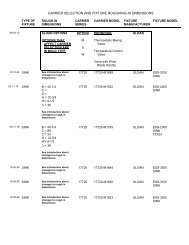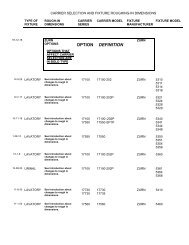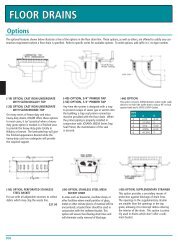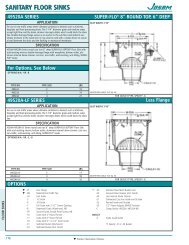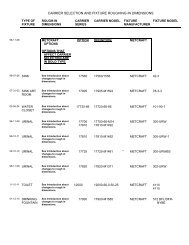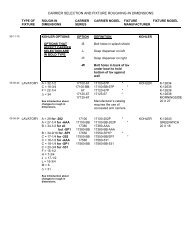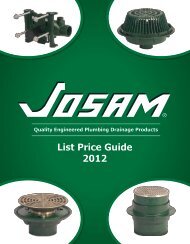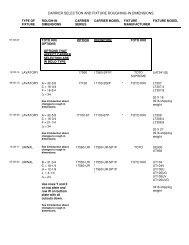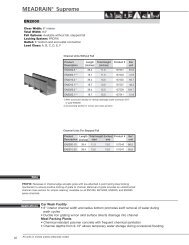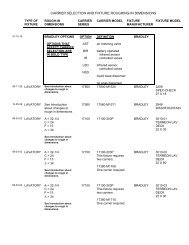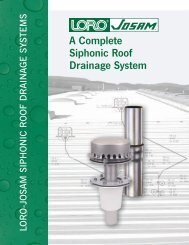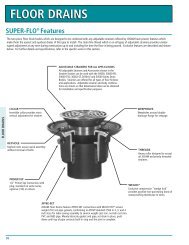Manual and Semi-Automatic Grease Interceptor - Josam
Manual and Semi-Automatic Grease Interceptor - Josam
Manual and Semi-Automatic Grease Interceptor - Josam
Create successful ePaper yourself
Turn your PDF publications into a flip-book with our unique Google optimized e-Paper software.
MANUAL INTERCEPTOR<br />
Installation <strong>and</strong> Operating Instructions<br />
1.0 General Description<br />
<strong>Grease</strong> interceptors serve the purpose of separating grease from water so that<br />
cleaner water is allowed to continue on in the drainage line. <strong>Manual</strong> interceptors<br />
(units without an automatic grease removal function) require regular checking <strong>and</strong><br />
grease layer removal.<br />
FOG (fats, oils, <strong>and</strong> grease) from kitchens is less dense than water <strong>and</strong> therefore will<br />
naturally separate to the top over time. Units that rely only on this difference in<br />
density for grease separation are termed “gravity-type” units. These types require a<br />
very large holding capacity so that separation has ample time to occur before water is<br />
passed on.<br />
“Hydro-mechanical” type units are designed to separate FOG more efficiently using<br />
an air intake, flow control, <strong>and</strong> baffle system. This engineered approach allows for a<br />
smaller capacity unit than a gravity-type unit for the same application.<br />
<strong>Josam</strong> interceptors are hydro-mechanical types designed to meet or exceed industry<br />
st<strong>and</strong>ards PDI-G101 <strong>and</strong> ASME A112.4.3.<br />
2.0 Installation<br />
Locate the grease interceptor as close as possible to the fixture(s) being served.<br />
This will reduce the length of piping subject to grease-laden wastewater <strong>and</strong> minimize<br />
the risk of blockages.<br />
Do not allow solids to enter the grease interceptor. Solids can accumulate in the<br />
bottom of the interceptor <strong>and</strong> eventually block the outlet. Decaying solids are a<br />
primary source of objectionable odors <strong>and</strong> can produce dangerous gases. Consider<br />
strainers in fixture outlets or a solids interceptor upstream of the grease interceptor.<br />
<strong>Interceptor</strong>s can be located on-floor, recessed, or on a level below. Plan for<br />
connections to piping <strong>and</strong> the need to remove the cover <strong>and</strong> baffle for grease<br />
removal <strong>and</strong> periodic cleaning. (Reference separate baffle drawing for dimensions.)<br />
Cleanouts are provided near the outlet end of the interceptor <strong>and</strong> may be internal or<br />
external to the grease separation chamber. Removal of the interceptor cover may be<br />
necessary to access the cleanout.<br />
Page 3



